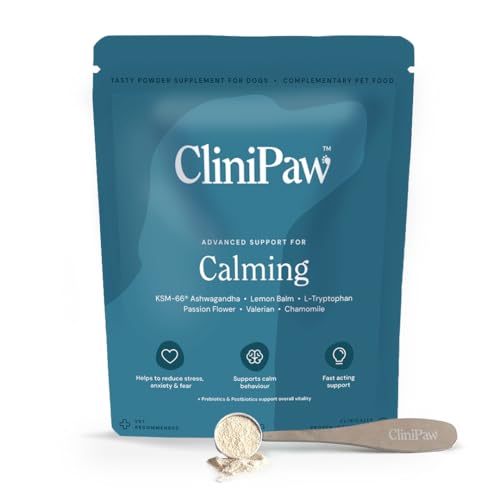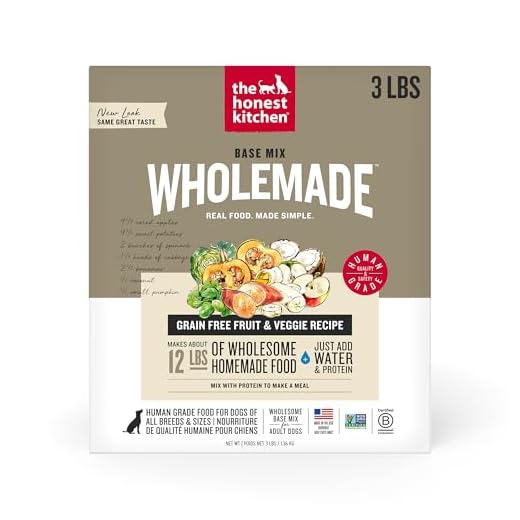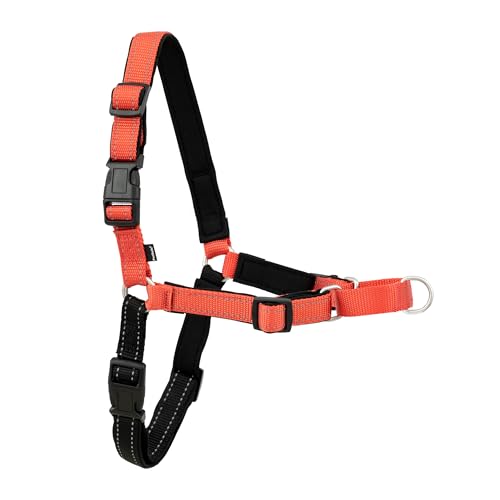




As a pet owner, I’ve often noticed a curious behavior in my furry companion. He eagerly accepts special snacks, showing excitement and enthusiasm, yet shows little interest in the regular meals I prepare. This puzzling pattern led me to investigate the reasons behind these differing reactions to various types of sustenance. Through careful observation and research, I’ve gathered insights that might help other pet owners facing the same situation.
One key aspect I’ve discovered is the influence of flavor and texture on my pet’s choices. Special snacks are often designed to be exceptionally appealing, with strong flavors and enticing aromas that captivate my four-legged friend. On the other hand, standard meals, although nutritious and balanced, might lack the same level of appeal. Understanding this distinction can shed light on the preferences of our animal companions.
Another significant factor involves the emotional and psychological elements tied to feeding. Special snacks are often given as rewards or during moments of bonding, creating positive associations. In contrast, regular meals may become routine, losing their excitement over time. By exploring these dynamics, we can better comprehend the complex relationship our pets have with their daily sustenance.
Understanding Your Canine’s Dietary Preferences
As a pet owner, it’s crucial to comprehend the nuances of your furry friend’s eating behavior. Each pet has unique tastes and patterns, which can sometimes be puzzling. Through careful observation and a bit of knowledge, we can better cater to their dietary needs and ensure they enjoy their meals.
In this section, I’ll delve into various factors that influence our pets’ appetites and provide insights on how to address common feeding challenges.
- Health Issues: Sometimes, underlying health problems can affect eating patterns. It’s essential to rule out any medical conditions that might be causing a lack of interest in regular meals.
- Food Quality: The quality and type of food you offer can significantly impact your pet’s willingness to eat. High-quality ingredients and palatability play a crucial role.
- Feeding Environment: The setting in which your pet eats can influence their appetite. A quiet, comfortable space is ideal for mealtime.
- Routine and Consistency: Establishing a consistent feeding schedule can help in maintaining a healthy appetite. Pets thrive on routine, and irregular feeding times can disrupt their eating habits.
- Behavioral Factors: Psychological aspects, such as stress or changes in the household, can also impact eating patterns. It’s important to ensure a stable and stress-free environment.
By paying attention to these aspects, you can gain a better understanding of your companion’s dietary habits and address any issues that arise. Remember, patience and attentiveness are key in fostering a healthy and happy eating routine for your beloved pet.
Health Issues Affecting Your Pet’s Appetite
As a caring pet owner, it’s important to understand that there are several health-related factors that can influence a pet’s desire to consume their regular meals. If you’ve noticed a sudden or gradual decline in your furry friend’s interest in their usual sustenance, it could be an indication of underlying medical conditions that need to be addressed.
One of the common causes of reduced appetite is dental problems. Issues such as tooth decay, gum disease, or oral infections can make eating painful, discouraging your companion from consuming their kibble or wet food. It’s crucial to regularly check their mouth and seek veterinary advice if you suspect any oral discomfort.
Another potential reason is gastrointestinal distress. Conditions like gastritis, pancreatitis, or intestinal blockages can lead to nausea, vomiting, or general discomfort, which naturally results in a reduced urge to eat. Monitoring your pet for symptoms such as bloating, diarrhea, or lethargy can help in identifying these issues early.
Chronic illnesses such as kidney disease or liver dysfunction can also impact a pet’s appetite. These conditions often affect the body’s metabolism and energy levels, making your pet less inclined to engage in their usual eating habits. Regular veterinary check-ups are essential for early detection and management of such diseases.
Furthermore, hormonal imbalances, such as those caused by thyroid issues or diabetes, can disrupt normal appetite patterns. These imbalances often require specific treatments and diet adjustments, so consulting with a veterinarian for a tailored approach is recommended.
Lastly, emotional and psychological factors should not be overlooked. Stress, anxiety, or changes in the environment can affect your pet’s eating behavior. Providing a calm, stable environment and addressing any potential sources of stress can help restore their appetite.
In conclusion, various health issues can impact your pet’s desire to eat their regular meals. By staying observant and proactive, you can ensure that any underlying problems are addressed promptly, keeping your furry friend healthy and happy.
Differences Between Treats and Regular Food
In this section, I want to explore the distinct characteristics that set apart snacks from everyday meals. Although both serve to nourish and delight our pets, they are fundamentally different in their composition, purpose, and appeal. Understanding these differences can shed light on why our furry companions might show a preference for one over the other.
Nutritional Composition
Snacks and regular meals are formulated with different nutritional goals in mind. While daily meals are designed to provide a balanced diet, ensuring our pets receive all necessary vitamins, minerals, and nutrients, snacks are often crafted to be more enticing and flavorful. This distinction plays a significant role in how our pets perceive and react to their food.
- Meals: Complete with proteins, fats, carbohydrates, vitamins, and minerals.
- Snacks: Often higher in fats and sugars, with less emphasis on a balanced nutritional profile.
Purpose and Usage
The intended use of these food types also contributes to their differences. Regular meals are meant to sustain health and energy levels throughout the day, while snacks are typically used as rewards or incentives during training. This functional divergence influences how they are formulated and presented.
- Sustenance: Daily meals support overall health, growth, and energy.
- Rewards: Snacks are designed to be more palatable and enjoyable, often used to reinforce positive behavior.
In conclusion, the distinctions between snacks and daily meals are evident in their nutritional content and intended use. These differences are key to understanding the varied responses our pets may have towards their food and can help us make more informed choices in their dietary routines.
Behavioral Reasons for Refusal of Meals
It’s not uncommon for our furry companions to show a preference for certain edibles over their regular meals. Understanding the underlying behaviors can help us address and potentially rectify this issue. By delving into various behavioral patterns, we can better comprehend why these preferences develop and what steps can be taken to encourage a balanced diet.
There are several behavioral factors that might contribute to an animal turning away from its regular meals:
- Habitual Preferences: Over time, pets might develop a habit of favoring certain textures or flavors, particularly those they find more enticing or rewarding.
- Environmental Influences: Changes in the environment, such as a new home, new people, or even a change in the feeding area, can cause stress or anxiety, leading to a decrease in appetite.
- Attention-Seeking Behavior: Pets quickly learn that refusing their regular meals often results in extra attention from their owners. This attention might come in the form of coaxing, offering different foods, or even hand-feeding.
- Feeding Routine Disruptions: Inconsistent feeding times or sudden changes in the feeding routine can confuse pets, making them less likely to eat their regular meals.
- Association with Negative Experiences: If a pet has had a negative experience related to its meal, such as feeling unwell after eating, it may associate that food with discomfort and avoid it in the future.
By observing these behaviors and understanding the possible reasons behind them, we can implement strategies to make mealtime a more positive and consistent experience. It’s crucial to create a stable and reassuring feeding environment, establish regular feeding routines, and ensure that any changes are introduced gradually.
In conclusion, addressing the behavioral reasons behind meal refusal involves a combination of observation, understanding, and consistent practices to foster a healthy eating routine for our four-legged friends.
Enhancing Your Pet’s Mealtime Experience
In this section, I’ll share some effective strategies to elevate the appeal of your furry friend’s regular dining experience. We all want our pets to eagerly anticipate mealtime, just like they do with treats. By incorporating simple yet creative methods, you can transform your pet’s mealtime routine into a delightful culinary adventure.
1. Introduce Variety
One key approach to making your pet’s regular meals more enticing is by introducing variety into their diet. Much like humans, pets can grow tired of eating the same thing every day. Consider rotating between different flavors and textures of food to keep their taste buds engaged.
- Experiment with different protein sources such as chicken, beef, fish, and lamb.
- Explore various forms of food including kibble, wet food, and raw options.
- Incorporate healthy fruits and vegetables as occasional meal additions or treats.
2. Enhance Presentation
The presentation of your pet’s meal can significantly impact their enjoyment. While treats often come in appealing shapes and sizes, regular food can seem mundane in comparison. By putting a little extra effort into presentation, you can make mealtime more visually stimulating for your pet.
- Invest in specialized pet feeding bowls or puzzle feeders to add an element of fun and challenge to mealtime.
- Try arranging your pet’s food in creative patterns or shapes to make it more visually appealing.
- Consider using interactive feeding toys that dispense food gradually, encouraging your pet to “hunt” for their meal.
By implementing these suggestions, you can transform your pet’s mealtime experience from ordinary to extraordinary, ensuring that they look forward to their regular meals as much as they do to their favorite treats.
When to Seek Professional Assistance
At times, it can be perplexing to decipher the underlying reasons behind your furry companion’s selective eating habits. Despite employing various strategies and adjustments, if your four-legged friend consistently demonstrates aversion towards consuming their sustenance or exhibits irregular behavior patterns, it might be prudent to consider seeking guidance from a qualified pet care professional.
Recognizing the signs indicating the necessity for professional intervention is crucial for ensuring the well-being of your pet. If attempts to address the situation independently yield no tangible improvements, or if you observe concerning symptoms such as persistent lethargy, significant fluctuations in weight, or any signs of distress, it’s imperative to promptly consult with a veterinarian or an animal behaviorist.
- Unexplained and persistent disinterest in meals despite varied offerings.
- Observable changes in demeanor, including heightened anxiety or aggression during meal times.
- Physical manifestations such as vomiting, diarrhea, or noticeable changes in appetite accompanied by other concerning symptoms.
Remember, every pet is unique, and what works for one may not necessarily be effective for another. Seeking professional assistance can provide tailored insights and personalized solutions to address your pet’s specific needs, fostering a happier and healthier relationship between you and your beloved companion.
undefined
Why does my dog seem to prefer treats over his regular food?
There could be several reasons for this behavior. One possibility is that the treats you’re offering are more appealing to your dog in terms of taste, smell, or texture compared to his regular food. Another reason could be that your dog has associated treats with positive experiences, such as training sessions or rewards for good behavior, making them more desirable. It’s also worth considering if there have been any recent changes in your dog’s environment or routine that might be affecting his appetite or preferences.
How can I encourage my dog to eat his regular food instead of just treats?
First, ensure that there are no underlying health issues causing your dog’s lack of interest in his regular food. If he’s healthy, try mixing small amounts of treats with his food to make it more enticing. You can also try offering his regular food in different ways, such as adding warm water or low-sodium broth to enhance the aroma and flavor. Establishing a consistent feeding schedule and avoiding free-feeding can also help regulate your dog’s appetite and make him more likely to eat his regular meals.







